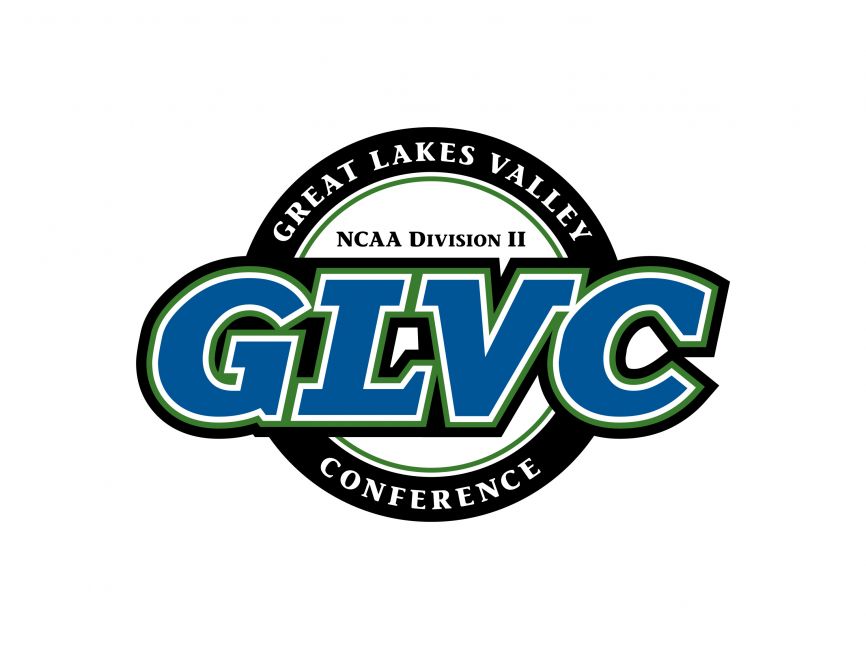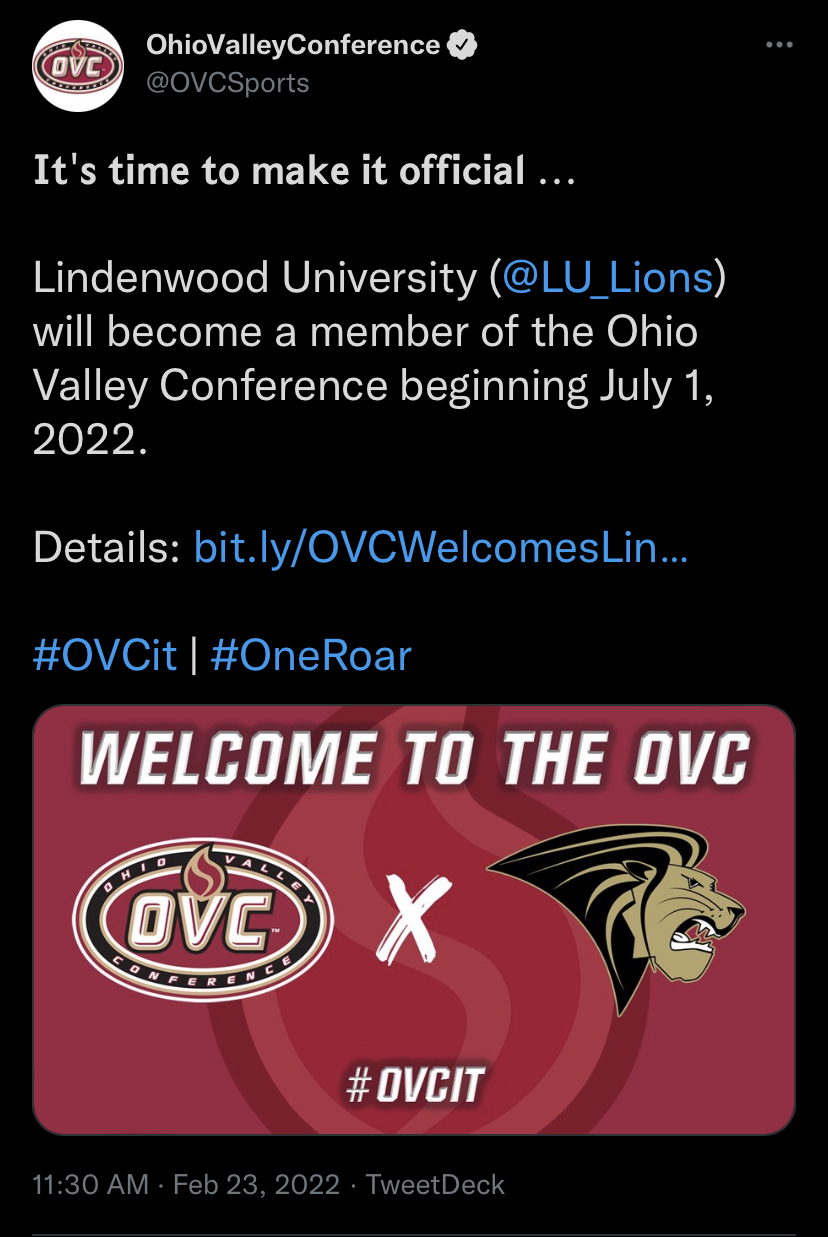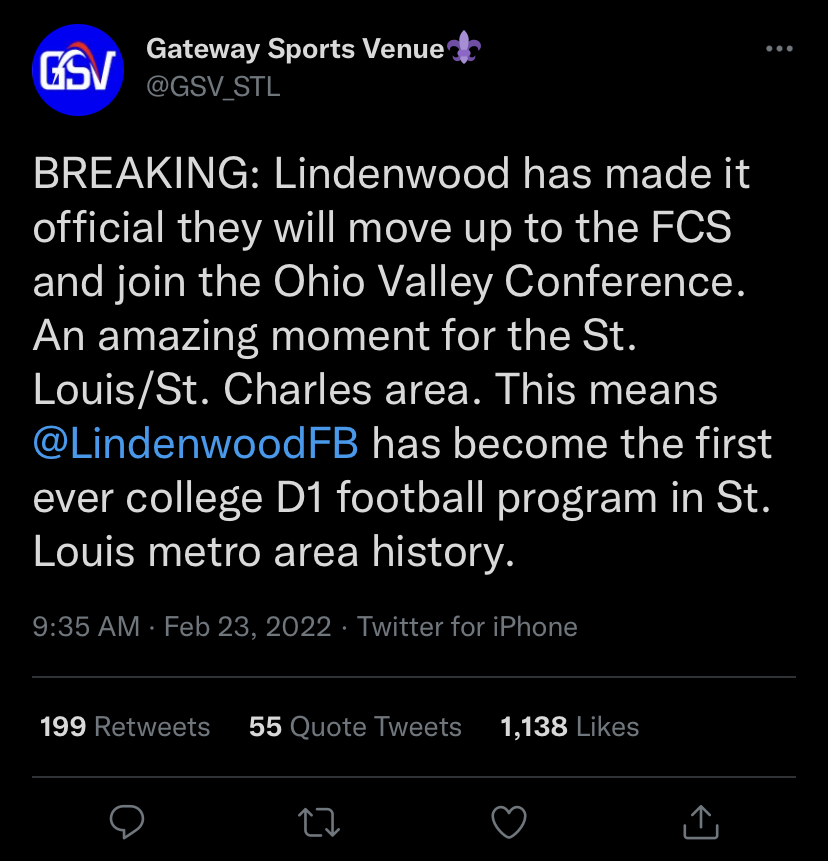
By Dylan Powell, Head Sports Writer
Photos collected by Dylan Powell
It is 12 p.m. on a cold Wednesday, February 23. Typically, students would be in the classroom studying for their upcoming exams prior to the midterm break. However, Lindenwood University had a different plan in mind; a public press release was being held in the gym for a big reveal. The band program, faculty and many other students arrived, curious of what the school had in store for the conference. Finally, the curtain dropped and the screens turned on: Lindenwood announced that as of July 1, 2022, the university athletic programs will be joining the Ohio Valley Conference (OVC), a NCAA Division I conference who also added former Great Lakes Valley Conference (GLVC) participant Southern Indiana just weeks ago after a late-fall invitation.

This creates two departures from the GLVC in the past year, which is the athletic conference in NCAA Division II athletics that McKendree participates in. McKendree joined the GLVC in 2012 after accepting the invitation in October 2010, making the jump from the National Association of Intercollegiate Athletics (NAIA) American Midwest Conference to the GLVC’s DII status.
When McKendree first joined the GLVC, the conference boasted 17 members. As of spring this semester, only 13 schools will be participating in conference play with these departures. Since McKendree’s arrival to GLVC play in 2012, several schools have left, such as Kentucky Wesleyan College, Northern Kentucky University, St. Joseph’s College (closed), University of Wisconsin-Parkside and Bellarmine University.
Despite these losses over the past decade, the conference has also gained schools such as Truman State University in 2013, Southwest Baptist University in 2019 and Lindenwood in 2019, who is now set to depart.
What does this mean for McKendree and it’s NCAA DII teams? To Mike Babcock, head coach of the McKendree football program, it certainly makes an impact, but there is optimism for the future of the GLVC. “Lindenwood leaving definitely has an impact. Lindenwood is a great competitor in our conference and our players and coaches loved competing against a team only 45 minutes away from us.”

At this time, there is not a released schedule for the 2022 football season. Also, it was noted that the loss of Lindenwood for McKendree and the GLVC is early enough in the year that all fall sports have the chance to find opponents. However, if sports are playing against McKendree later in their prospective seasons, it may be hard to find a replacement. A lot of teams that have a long season with few active conference opponents such as football may struggle to find someone to replace Lindenwood late into their season, especially if it is a McKendree home game. This may negatively impact the schedule, but only time will tell.
On the optimistic side, however, this opens the door to the future of the GLVC with potential additions. When asked about the chances of adding more athletic programs to the conference, Babcock said that it’s possible. “I believe so. The commissioner, the presidents and the athletic directors are hard at work to make that determination. All sports are affected by Lindenwood’s departure. Hopefully in the near future we can hear something about a new school joining the league.”
At this time, it is believed that there are many schools ready to make the jump from the NAIA or NCAA DIII level to NCAA DII. We saw the jump McKendree made 10 years ago, and it has paid off. When a college or university makes the move upward in class, it is said that the annual revenue increases significantly. A recent study showed that schools moving from Division II to Division I experience an average real increase in athletics spending of $3.7 million annually (https://ncaaorg.s3.amazonaws.com/about/d2/tools/DIIAbt_DollarsAndSense-Reclassification.pdf ). This increase in revenue helps fund programs that may be struggling due to lack of ticket sales, cuts in athletic funding, and loss of athletic teams within the department.
There is hope that additions could be made through smaller programs who are eligible for this move forward via invitation, but there is one consideration that has to be made to move before anything is finalized: schools may begin competing as early as the next semester after accepting their bid, but it is a four-year process when moving from NCAA DII to NCAA DI. This means that a university who just joined a conference cannot participate in any championships until the process is over. For example, Lindenwood will play OVC opponents in the fall of 2022, but the university will not be eligible to participate in any championship game for a title or bid to a tournament hosted by the NCAA at the DI level until the 2026-2027 season.
At the time that McKendree made the move from NAIA to NCAA DII, the university had to wait for their three-year process to be completed before competing for a title.This may be seen as a downside to schools looking to reclassify, but with the revenue that can be generated, most also believe the wait is worthwhile.
Progress is not always positive for both sides in a situation, but reclassification happens every year. Someone is bound to make a decision that will change programs, and transform operations for years to come. This is what we are seeing in the GLVC and in other conferences around the country at all levels of collegiate athletics. You never know when it is coming, but it is inevitable.
This is the beauty of sport. For some it is a smooth transition, and for others, it is a rough, winding road. In his final remarks, Mike Babcock spoke highly of Lindenwood’s head football coach, stating “I know their Head Football Coach, Jed Stugart, and I know that he will get those guys ready to go. He’s a good coach and they have a good culture. Time will tell if the transition will be a seamless one or not. We shall see.”
One day, we will look back at this time in GLVC, and ask ourselves two questions— where are they now, and where are we now?